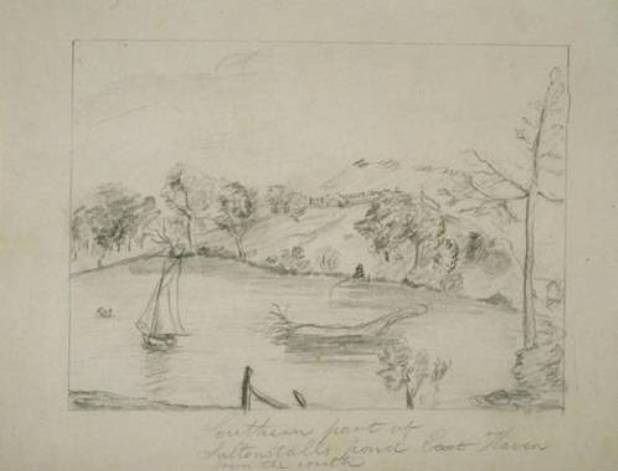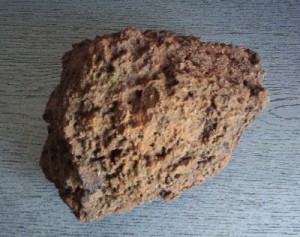When historians talk about iron production in Connecticut, the conversation inevitably turns to the Salisbury Iron District. With its large deposits of quality ore, abundant water power, and ample supplies of firewood, the area in northwest Connecticut that included the towns of Salisbury, Canaan, North Canaan, Sharon, Cornwall, and Kent provided the perfect combination of natural resources required to manufacture high-quality iron. What is usually overlooked in these discussions, however, is that the roots of Connecticut’s iron industry lie far away from Salisbury, in East Haven.
Furnace Sited Near Saltonstall Lake
In 1655, with East Haven residents engaged primarily in farming, New Haven businessman Stephen Goodyear and Boston mining entrepreneur John Winthrop Jr. selected a site near the Saltonstall Lake in the modern-day town of East Haven to build Connecticut’s first iron works. In appreciation for the business, local government officials allowed the irons works to operate tax-free for its first 7 years.
The nearby town of Branford assisted in getting the enterprise off the ground, agreeing to provide land and 3/8 of the wood required for making the necessary charcoal. With a dam and furnace erected, bog ore supplies came by cart or down the Quinnipiac River by ship, providing the last of the resources needed for production.
A “Conservator of the Morals” Oversaw Worker Conduct
Unfortunately for local residents, the iron industry in the 17th century often attracted a rough and unsavory element to the area, and it was not long before residents complained about acts of lawlessness perpetrated by the iron works’ employees. After the filing of a 1657 complaint, workers desiring a job at the East Haven iron works needed to provide “certificates of character” in order to receive employment consideration. In addition, the company placed a “conservator of the morals” on site to monitor the workers’ behavior.
In 1679, the deaths of numerous employees (attributed to an epidemic that spread throughout the area) brought production to a halt. This, along with possible concerns regarding dwindling supplies of nearby ore, helped bring an end to iron production in East Haven. In 1686, the furnace site became a grist mill. Six years later, a man by the name of John Potter attempted to revive iron production in the area but to no avail. Going forward, the Salisbury district became Connecticut’s primary source for iron production.









